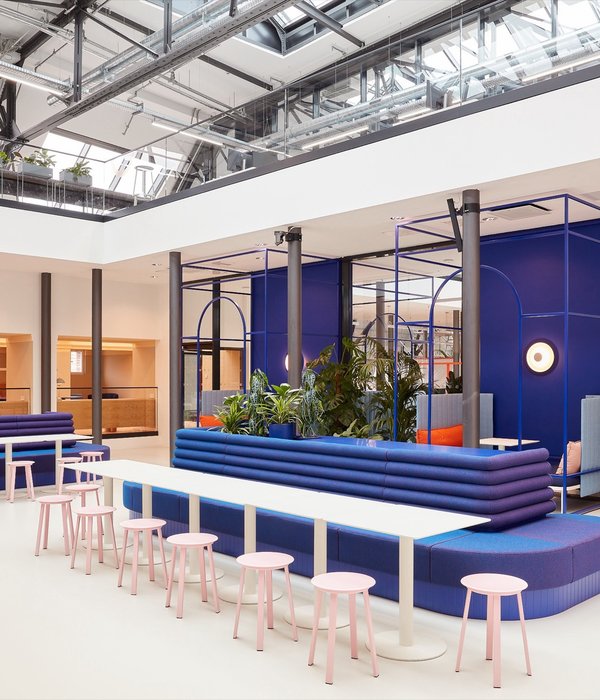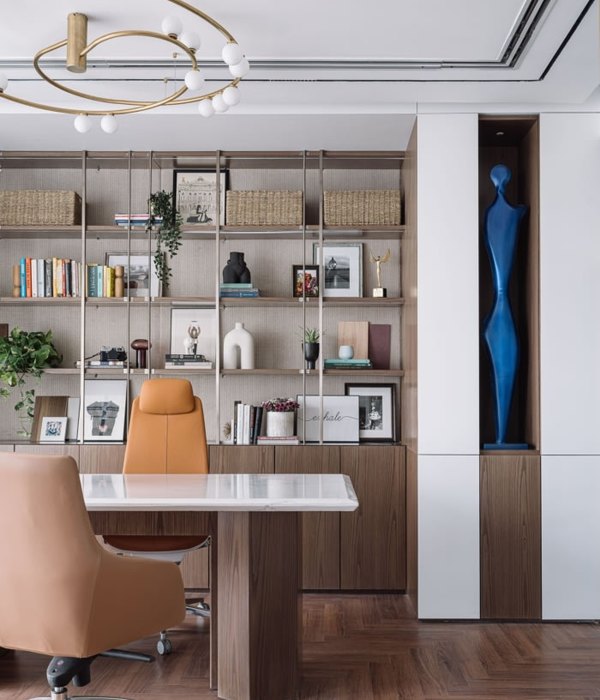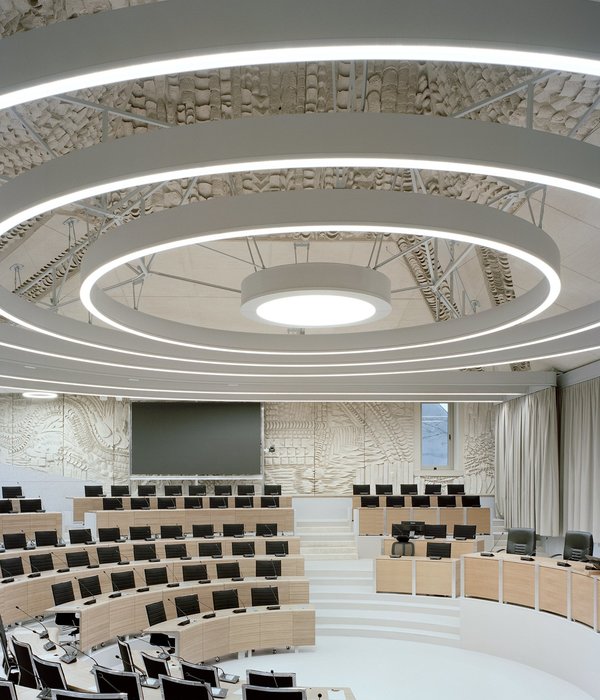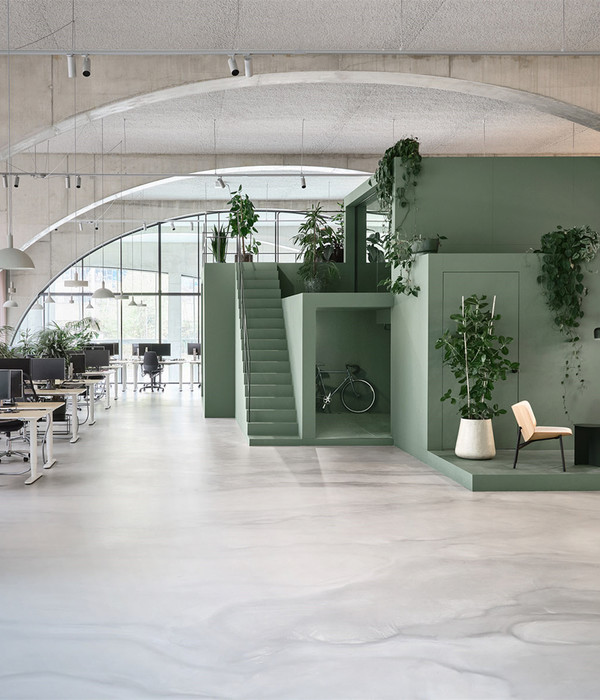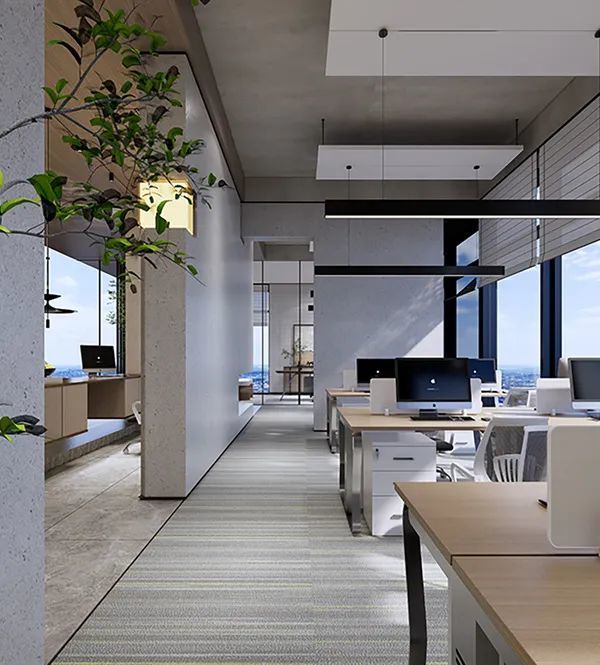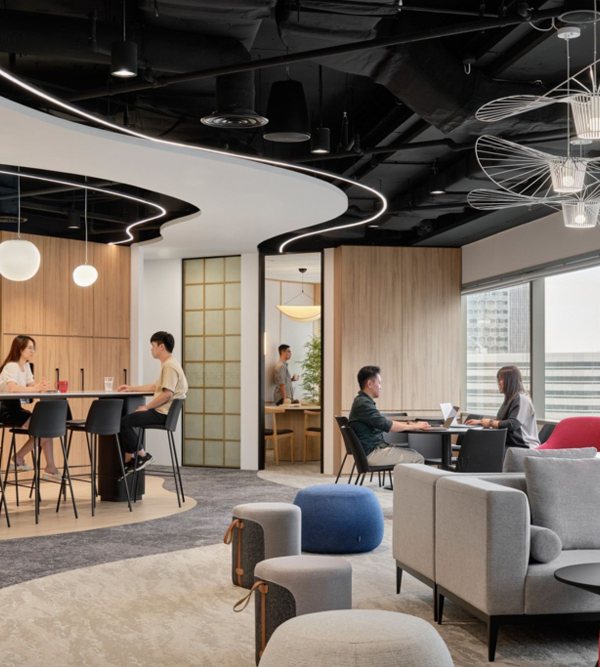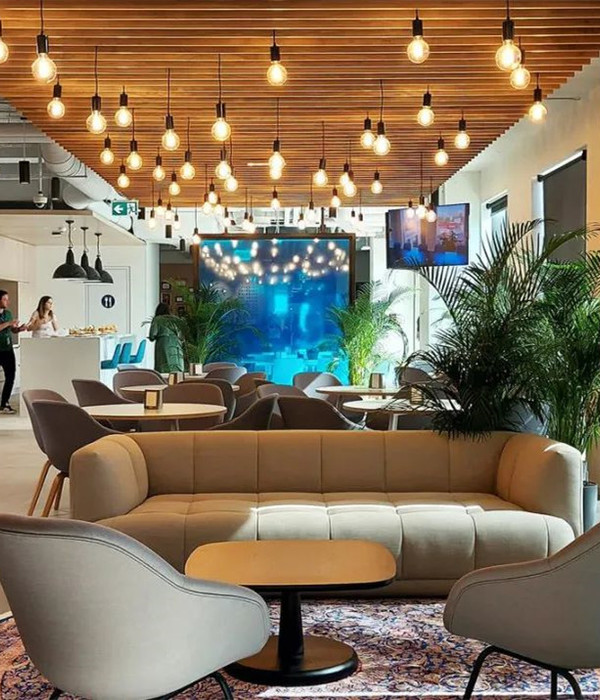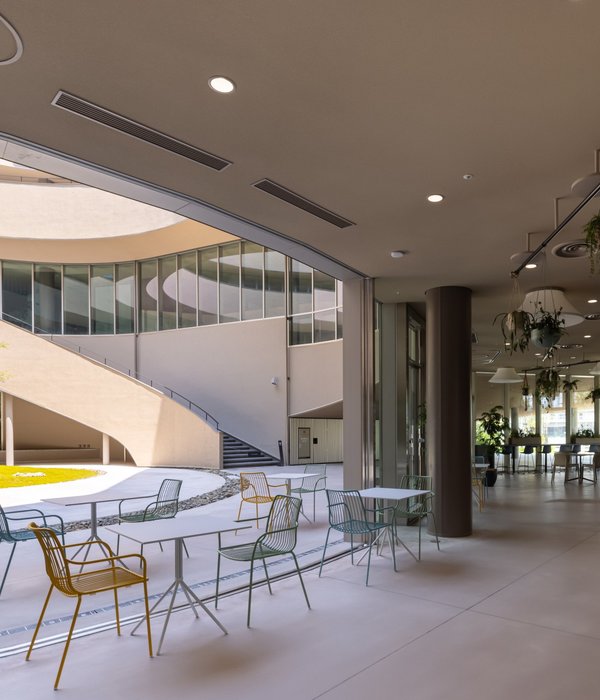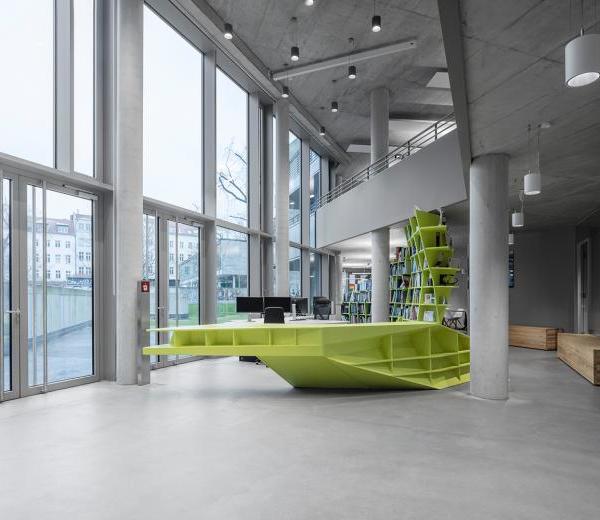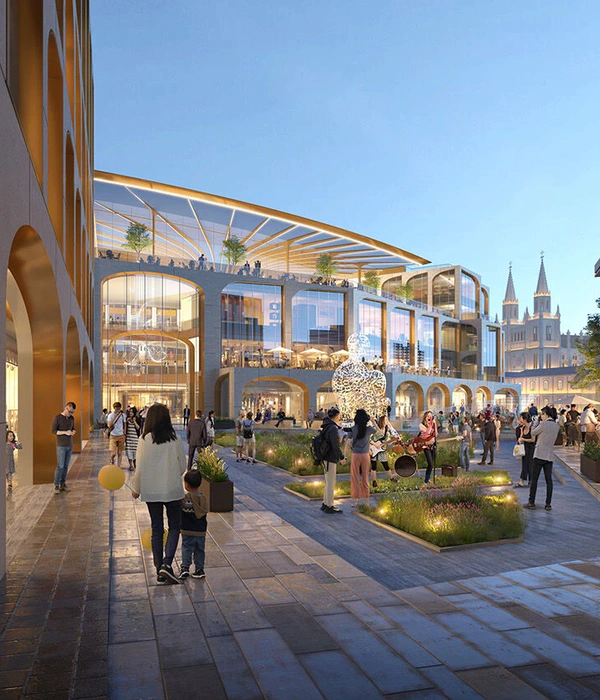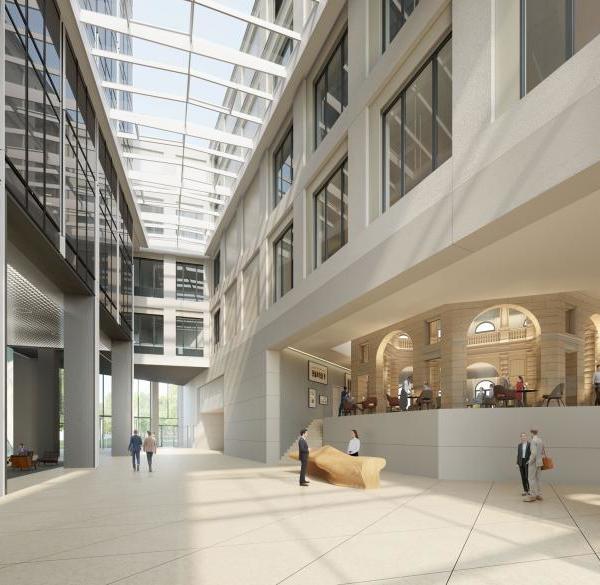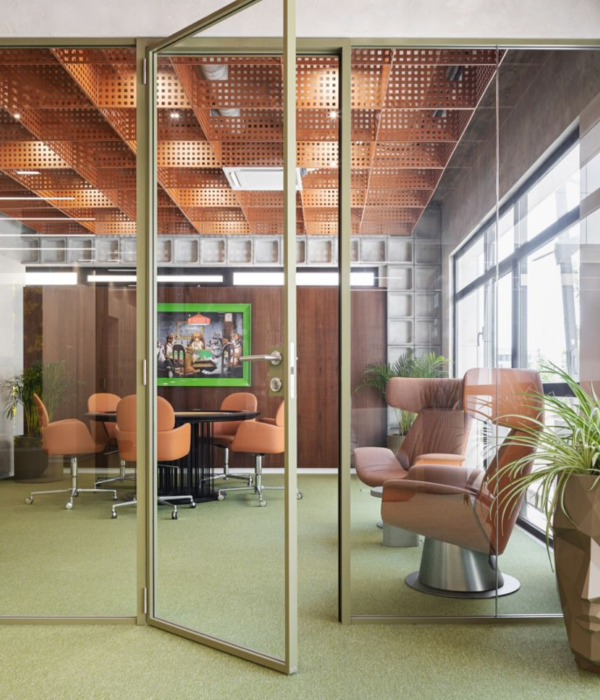Jingyuan No.22 project transforms an old cotton warehouse with a ground floor area of 330 square meters to a coworking office owned by two young Internet finance companies.
The design concept, originated from the concentration of space interest and flexibility, is to connect the experiential space with Internet thinking. The architect created an interactive coworking space with multiple working possibilities and varying narrative scenes through furniture partitions and natural light control.
“Spatial Montage”
As the primary organizing element, this two-storied steel structure allows to construct a new spatial order in former Jingyuan No.22 Warehouse.
Each level has an independent looping circulation system that is organized along the central courtyard. The main conference space and a white wall specially for projection within courtyard have been achieved not only as the visual center of the entire building, but also a considerable functional area where is the main venue for company meetings and entertainment. The open working space around the courtyard ensures efficiency of teamwork and communication between employees.
In addition to main conference area, the cafeteria, sunken sitting area next to the secondary entrance, library zone on the upper floor and the grand OSB staircase can be adapted to the independent group discussion or even temporary small-scale teamwork for programmers. As a result, nonlinear montage of work scene designed by architect is finally presented through diverse working contexts. Meanwhile, this continuously evolving space that can adjust to the development of team guarantees daily operation of new employees when the fixed workstation is not enough.
The dark box-style main entrance is also equipped with bike wall mounts particularly benefit to bicycle enthusiasts. The stairs in black connects to the entry box leads employees directly to the coworking space and formed the major interior circulation. The secondary entrance located in the west of building along with the grand staircase is an auxiliary route. Furthermore, in order to enrich the vertical circulation, the "ninja channel", a slide hidden between partition walls from where programmers can quickly reach the restroom and bedroom downstairs is subtly built.
The functional collage full of sense of movie scene is interwoven with flowing circulation space, eventually has generated a three-dimensional spatial sequence.
Greeting to the Sun
In this project, apart from creating a composite office space for more than 100 people, another challenge for architect is to reintroduce natural light.
3 newly opened skylights resolved the problem that indoor lighting of Jingyuan No.22 was severely blocked by the south side building, 2 of which installed side by side above the courtyard enable to bring more lights for main conference area, the third one is arranged in the eastern section to clarify the open office space. In winter, the sun can shine directly into the ground floor as the decrease of solar elevation angle. Blue sky and white clouds framed in the skylights with René Magritte's surrealist style allow programmers to disengage temporarily from busy working reality.
The translucent glass blocks that replaced half part of the old red brick wall on west façade provide a soft, comfortable illumination for interior public space while avoiding issues caused by facing to the west. For reasons of cost control, the architect didn’t change the original windows, but installed the blinds instead to facilitate the employees to adjust the indoor light at any time. In summer, closing the blinds has a certain effect of thermal insulation as well.
Now when the weather is nice, the entire building can basically rely on natural illumination, and people can experience the changing daylight throughout the year. Every morning, programmers pass through dark box entrance symbols mode transition, find their own narrative scene in Jingyuan No.22, and start another brand new day.
{{item.text_origin}}

